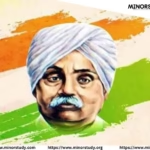📰 All About Indian Newspaper Day – Celebrating the Birth of Indian Journalism
Indian Newspaper Day: In the age of smartphones and social media reels, the rustling sound of a morning newspaper still evokes a sense of tradition, knowledge, and trust. Indian Newspaper Day celebrates not just the printed page, but the voice of a nation, its informed citizenry, and the journalistic values that shape democracy.
- 📰 All About Indian Newspaper Day – Celebrating the Birth of Indian Journalism
- 🗞️ History of Indian Newspaper Day: A Voice Born in Colonial Times
- 📊 Fascinating Facts About Indian Newspaper Day
- 📅 Timeline: Key Events in Indian Journalism
- 🎯 Significance of Indian Newspaper Day in Our Life
- 💬 Most Common FAQs about Indian Newspaper Day
- 🌸 Wishing and Messages for Indian Newspaper Day
- 📌 Important Observance Points
- 🧠 Impact on Daily Life and Modern Relevance
- 🏁 Conclusion: The Ink That Wrote Our Nation’s Story
Indian Newspaper Day is observed on January 29th every year. It commemorates the publication of India’s first newspaper—Hicky’s Bengal Gazette, which hit the press in 1780 in Calcutta (now Kolkata). This day honors over two centuries of fearless reporting, and the commitment to truth, accountability, and public awareness.
🗞️ History of Indian Newspaper Day: A Voice Born in Colonial Times
The roots of Indian journalism stretch back to the British colonial era. The first newspaper in India, Hicky’s Bengal Gazette, was launched by James Augustus Hicky on 29 January 1780. Printed in English, it was known for its bold critique of the British East India Company, especially Warren Hastings, the then Governor-General of India.
Though the publication was eventually banned in 1782 for its scathing criticisms, it paved the way for free expression in India. Over time, several other regional and national publications emerged, becoming instruments of both social reform and freedom struggle.
Key Milestones:
1818: Samachar Darpan, first Bengali-language weekly newspaper.
1822: Mumbai Samachar begins publication, continues to this day.
1857–1947: Newspapers became the backbone of India’s independence movement with publications like Kesari, The Hindu, Amrita Bazar Patrika, and Young India.
Post-1947: The press matured into a fourth pillar of democracy, watchdog for rights, and catalyst for awareness.
📊 Fascinating Facts About Indian Newspaper Day
India is the second-largest newspaper market in the world (after China), with more than 100,000 registered publications.
Over 40% of the population still reads newspapers daily—both in print and e-paper formats.
The Indian press is published in over 20 languages, including Hindi, English, Urdu, Tamil, Bengali, Marathi, and Telugu.
Dainik Jagran holds the title of the most read daily in India.
Newspapers like Kesari (by Lokmanya Tilak) and Harijan (by Mahatma Gandhi) were once banned or censored during the British era.
The Press Council of India, established in 1966, monitors journalistic ethics and ensures freedom of the press.
The first Indian language newspaper was Samachar Darpan in Bengali (1818), followed by Bombay Samachar in Gujarati (1822).
Many journalists became freedom fighters—Ganesh Shankar Vidyarthi, Bal Gangadhar Tilak, and Mahatma Gandhi among them.
Today’s digital news outlets owe their foundations to legacy print journalism.
📅 Timeline: Key Events in Indian Journalism
| Year | Event |
|---|---|
| 1780 | Hicky’s Bengal Gazette – First newspaper in India is published. |
| 1818 | Samachar Darpan – First Indian-language paper (Bengali). |
| 1822 | Bombay Samachar – Still in circulation today. |
| 1878 | Vernacular Press Act passed by the British to gag Indian voices. |
| 1881 | The Hindu founded – becomes one of India’s most respected English dailies. |
| 1919 | Jallianwala Bagh massacre – Press awakens public opinion. |
| 1942 | Quit India Movement – Newspapers play vital role in mobilizing the masses. |
| 1947 | Independence – Indian press becomes a free press. |
| 1966 | Press Council of India is established. |
| 1990s–2020s | Emergence of online journalism and digital newspapers. |
🎯 Significance of Indian Newspaper Day in Our Life
Freedom of Speech & Democracy: Newspapers are the bedrock of free expression in a democratic society.
Informed Citizenship: A well-read population makes responsible decisions in voting, governance, and civil matters.
Public Watchdog: Journalists act as watchdogs against corruption, abuse, and injustice.
Education & Awareness: From school kids reading “The Hindu in School” to senior citizens following editorials, newspapers bridge generations.
Cultural Record: Newspapers archive social, political, and cultural history.
Language Promotion: Regional newspapers preserve and promote vernacular languages and literature.
Employment Generator: Thousands work in journalism, printing, advertising, and logistics.
💬 Most Common FAQs about Indian Newspaper Day
Q1: Why is Indian Newspaper Day celebrated on 29th January?
A: It marks the anniversary of India’s first newspaper—Hicky’s Bengal Gazette—published on 29 January 1780.
Q2: Who was James Augustus Hicky?
A: He was the founder of India’s first newspaper and is often called the father of Indian journalism.
Q3: Is Newspaper Day a public holiday?
A: No. It is an observance and not a government-declared holiday.
Q4: How do schools or institutions observe this day?
A: With debates, essay contests, reading sessions, and workshops on media literacy.
Q5: What is the role of newspapers today in the digital era?
A: Even today, newspapers provide fact-checked, in-depth journalism and retain a loyal readership, both in print and online.
🌸 Wishing and Messages for Indian Newspaper Day
While not traditionally a greeting-centric observance, meaningful messages can be shared to raise awareness:
📰 “Let us honor the brave voices of Indian journalism who stood firm for truth, justice, and integrity. Happy Indian Newspaper Day!”
📢 “May the ink of truth never dry. Respect and salute to the pillars of press freedom!”
🗞️ “To every journalist who puts the people before power—your work matters. Happy Indian Newspaper Day.”
🪶 “Today we celebrate the power of the written word—sharp as a sword, deep as a revolution.”
📌 Important Observance Points
Educational institutions hold reading campaigns and awareness drives.
Libraries display rare editions and iconic front pages.
Veteran journalists and editors are honored by media houses.
Students are encouraged to read newspapers daily to enhance knowledge and vocabulary.
🧠 Impact on Daily Life and Modern Relevance
Even in the digital age, newspapers hold tremendous daily value:
They curate credible information, helping us avoid misinformation.
Their editorial columns build critical thinking and socio-political awareness.
They form the basis of competitive exams prep and general knowledge.
They shape public debates, influence policy, and drive social reform.
Their presence in morning routines symbolizes discipline and curiosity.
🏁 Conclusion: The Ink That Wrote Our Nation’s Story
Indian Newspaper Day is a proud and powerful reminder that behind every newspaper lies a team of truth-seekers who shape our views, challenge our thoughts, and push society forward. From dusty printing presses in 1780 to digital newsrooms today, the journey of the Indian press is filled with courage, resistance, and relentless pursuit of truth.
Let us not reduce this day to a forgotten page. Instead, let’s make it a wake-up call—to support ethical journalism, cherish free speech, and never underestimate the power of a printed voice.
Because somewhere, in a bustling city or a silent village, a journalist is still picking up the pen—not just to inform, but to inspire.








